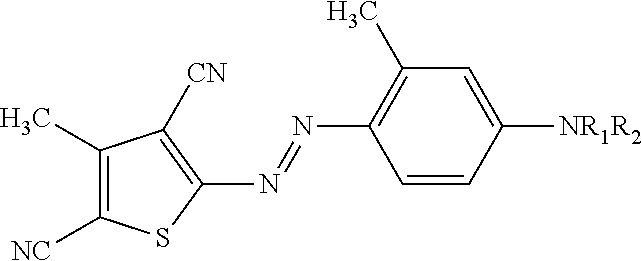Packaged particulate detergent composition
a technology of detergent composition and particulate, which is applied in the direction of packaging foodstuffs, caps, packaged goods, etc., can solve the problems of hygroscopic and sticky, consumers tend to use more, and achieve the effect of reducing the likelihood of overdosing, slowing down the flow, and steady and predictable flow
- Summary
- Abstract
- Description
- Claims
- Application Information
AI Technical Summary
Benefits of technology
Problems solved by technology
Method used
Image
Examples
example 1
Preparation of the Coated Particles
[0110]Surfactant raw materials were mixed together to give a 67 wt % active paste comprising 85 parts LAS (linear alkyl benzene sulphonate), 15 parts Nonionic Surfactant. The raw materials used were:[0111]LAS: Unger Ufasan 65[0112]Nonionic: BASF Lutensol AO30
[0113]The paste was pre-heated to the feed temperature and fed to the top of a wiped film evaporator to reduce the moisture content and produce a solid intimate surfactant blend, which passed the calcium tolerance test. The conditions used to produce this LAS / NI blend are given in Table 1.
[0114]
TABLE 1Jacket Vessel Temp.81° C.FeedNominal Throughput 55 kg / hrTemperature59°C.Density1.08 kg / lProduct Moisture(KF*)0.85%Free NaOH0.06%*analysed by Karl Fischer method
[0115]On exit from the base of the wiped film evaporator, the dried surfactant blend dropped onto a chill roll, where it was cooled to less than 30° C.
[0116]After leaving the chill roll, the cooled dried surfactant blend particles were mill...
example 2
[0126]One skilled in the art will appreciate that the oblate spheroid is formed by a malleable circular exudate being cut as it exits a conduit. The inner section of the exudate travels a greater speed than the edge of the exudate as it is cut forming the “oblate spheroid” shape (discs with rounded surfaces). The coating process also serves to further round the edges of the “oblate spheroid”. One skilled in the art of detergent manufacture will appreciate that there will be some deviation in the exactness of the “oblate spheroids”.
[0127]We measured the ratio of Tapped BD to Poured BD for the coated particles from example 1 (oblate spheroids) and two conventional laundry detergent powders. The results are given in table 5.
[0128]Poured BD—The bulk density of the whole detergent composition in the uncompacted (untapped) aerated form, determined by measuring the increase in weight due to pouring the composition to fill a 1 litre container. The container is overfilled and then excess pow...
example 3
[0132]We measured settling volume after tapping for 1 min using the Retsch sieve shaker at a setting of 0.2 mm / “g”. The results are given in table 6.
[0133]
TABLE 6SampleInitial volumeFinal volumeCoated large size Oblate spheroids *500 ml480 mlPrior art powder composition 1 500 ml470 ml“OMO” brandPrior art powder composition 2: 500 ml445 ml“Ariel” brand
[0134]Only the large non-spherical coated particles flowed freely out of the measuring cylinder after this experiment. In contrast, both of the prior art powders were compacted and the cylinder needed tapping to get them to flow.
PUM
| Property | Measurement | Unit |
|---|---|---|
| wt % | aaaaa | aaaaa |
| thickness | aaaaa | aaaaa |
| thickness | aaaaa | aaaaa |
Abstract
Description
Claims
Application Information
 Login to View More
Login to View More - R&D
- Intellectual Property
- Life Sciences
- Materials
- Tech Scout
- Unparalleled Data Quality
- Higher Quality Content
- 60% Fewer Hallucinations
Browse by: Latest US Patents, China's latest patents, Technical Efficacy Thesaurus, Application Domain, Technology Topic, Popular Technical Reports.
© 2025 PatSnap. All rights reserved.Legal|Privacy policy|Modern Slavery Act Transparency Statement|Sitemap|About US| Contact US: help@patsnap.com


